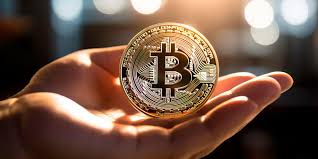Think about having Bitcoin in your hands, people who like Bitcoin (BTC) have taken it into the real world, even though it is primarily a digital currency. Bitcoin that you can hold in your hand is called “physical Bitcoin.” It usually comes in the form of coins, paper wallets, or collectibles with a secret key. The first and most well-known was the Casascius Bitcoin which Mike Caldwell created in 2011. Physical Bitcoin is still an interesting mix of cryptocurrency and real assets that investors and fans alike value.
Casascius Physical Bitcoin Birth
Mike Caldwell, better known as Casascius, showed off the first real Bitcoin on BitcoinTalk on 6th September 2011. He aimed to make Bitcoin more popular with regular people by making it easier to understand and use. There was an image on these coins that made it impossible to change the BTC address or private key. At first, it cost 1.25 BTC to make one 1 BTC coin so Caldwell sold them for 1 BTC to keep the prices fair. Early Bitcoin users were sceptical, but this currency gained popular. Thus, Caldwell created coins worth 10 BTC, 25 BTC, 100 BTC, and 1000 BTC.
The Value and Collectibility of Physical Bitcoin
A Bitcoin’s value is based on both how much Bitcoin it holds and how much it’s worth to collectors. A few scarce versions are now worth a lot of money. A 1,000 BTC Casascius coin was worth about $109 million when Bitcoin reached its highest point in January 2025. However, after Caldwell sold 28,000 BTC coins in 2013, production stopped because he faced legal problems with financial rules.
Other Physical Bitcoin Innovations
Other physical Bitcoin innovations, like paper wallets, metal trinkets, and unique coins, were based on Casascius’s idea. Iconic examples include the MJB 2013 Physical Bitcoin, which is based on the same concept but only collectible. A physical Bitcoin can now be anything with a written private and public key that can store BTC.
Conclusion
Bitcoin is still a digital currency, but real Bitcoin has become a collectible and essential piece of crypto history. Whether they’re interested in investing, for nostalgia, or just for fun, these real-life BTC images continue to captivate cryptocurrency fans worldwide. But in today’s constantly changing crypto world, you should always ensure they are legal and actual before buying or selling them.



